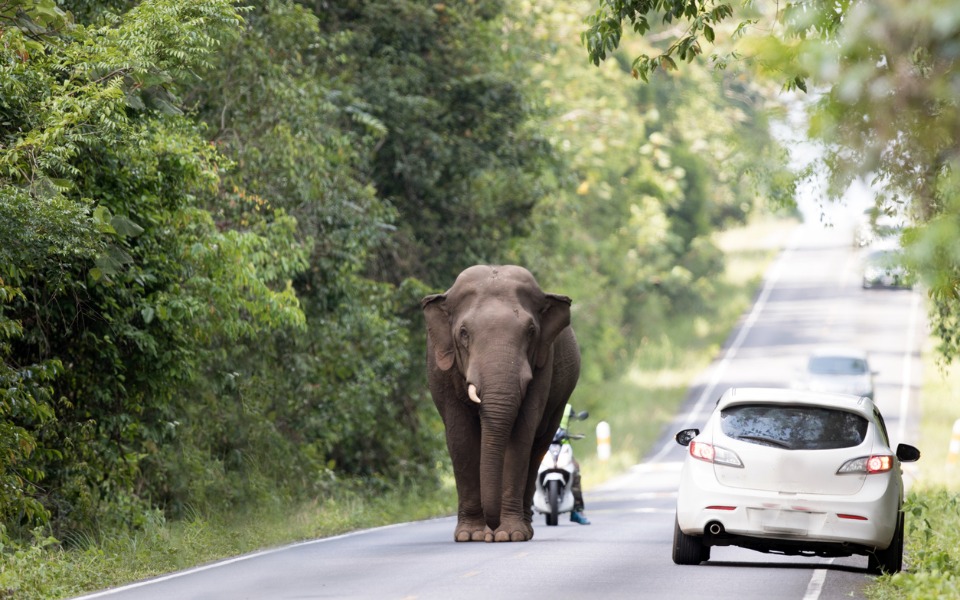
Coimbatore turns game-changer in elephant corridor protection

The recent bold initiative by a former Coimbatore Collector S Nagarajan to retrieve lands from a government department and from private hands and designate them as reserved lands has come as a shot in the arm for the ongoing efforts towards the protection of elephant corridors in the district.
About 1,049.74 hectares of poromboke (waste land) land have been retrieved from the revenue department and announced as reserved lands under Section 26 of Tamil Nadu Forest Act, 1882. Moreover, the official has further declared that about 50.79 hectares of private land which falls on the path of the Kallar elephant corridors as a ‘private forest’.
Because of this addition of 1,100.53 hectares of lands, the district’s green cover has increased from 1,22,215.13 hectares to 1,23,267.87 hectares. The Collector’s actions have been widely appreciated by the locals and environmentalists since bringing these lands under the purview of the forest department has been a long-standing demand. None of the earlier collectors of the district had taken any concrete action on this issue.
Also read: Wildlife experts see reduced man-elephant conflict due to lockdown
According to Poovulagin Nanbargal, an NGO working in the field of environmental protection this is the first time in Tamil Nadu a private land has been announced as an elephant corridor.
“In 1949, the Tamil Nadu Preservation of Private Forests Act was enacted. Under the law, a forest and the corridor located even in a private land should be protected. But from 1949 to date, not a single private land was announced as a corridor. Henceforth, Coimbatore can act as a precedent and officials from other parts of the state can come forward to protect private forests”, said the organisation in a statement.
It also drew attention to the fact that the Wildlife Trust of India’s (WTI) second edition report on elephant corridors titled ‘Right of Passage: Elephant Corridors of India’ has listed the Kallar corridor as a ‘High Ecological Priority’. According to WTI, this corridor provides “crucial passage” to elephants in the Nilgiri Biosphere Reserve, which is home to the largest population of Asiatic elephants.
“The Kallar corridor connects the Brahmagiri-Nilgiri-Eastern Ghats elephant population range with the Nilambur-Silent Valley-Coimbatore population range,” said WTI on one of its social media posts.
Eventually, Nagarajan was transferred and appointed as Commissioner of Land Administration. It is to be noted that earlier Commissioners of the land administration had allegedly distributed government pattas indiscriminately.
Also read: Four elephants found dead in Cauvery wildlife sanctuary
Still, the necessity for a flyover
While environmental activists welcome the move and appreciate the Collector, they also pointed out that just by freeing the corridor an a private forest is not enough to make it a useful one in both letter and spirit.
Kalidasan, founder of Osai, an NGO working towards the conservation of wildlife said that three key factors are at play when it comes to elephants: habitat, migratory path and corridor.
“The narrow migratory path which connects two major habitats is called the elephant corridor. If this corridor breaks, the landscape of Asiatic elephants will be broken. That’s why we say the Kallar corridor is a ‘crucial passage’. To avoid this, we need to build a flyover,” he averred.
He added that over the years the Kallar corridor has developed bottlenecks in many places with the arrival of schools, hotels, estates, farms, etc. If additional constructions are carried out, it will hamper elephant movements. That’s the reason private lands were brought into the Forest Act.
But, though the lands fall under the Forest Act, the land titles do not change, said Kalidasan. However, if the owners need to take up any work on their lands, they must get permission from the authorities.
There’s a dire need for a flyover. “The railway track and roads meanwhile have become major hindrances for elephant movement. In summer alone, the Ooty road witnesses about 8,000 to 9,000 vehicle movements. If the elephants move as a family from one end to another during this kind of peak road traffic, the movement becomes very difficult for the animals. So, to avoid any clashes, we need a flyover,” pointed out Kalidasan.
A report submitted by World Wide Fund – India (WWF) in 2008-2009 suggested that a flyover bridge should be built from the first hairpin bend to the second hairpin bend. This would divert the vehicles to the bridge, while the corridor remains undisturbed.
“The vehicle movement in NH 47 is a major reason why elephants shift their routes through human habitats, which ends up in tragic animal-human conflict. In the eastern side of the corridor lies a private estate and on the western side the farms of the state horticulture department are found. We need to acquire them to build a flyover. The earlier forest secretaries have visited the site but it is up to the Road Transport and Highways department to allocate the amount and build the bridge,” he said.


